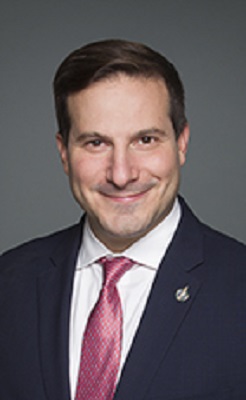MARCO E. L. Mendicino, Minister of Immigration, Refugees and Citizenship, on Wednesday announced an innovative pathway to permanent residence for over 90,000 essential workers and international graduates who are actively contributing to Canada’s economy.
These special public policies will grant permanent status to temporary workers and international graduates who are already in Canada and who possess the skills and experience the country needs to fight the pandemic and accelerate its economic recovery, he said.
The focus of this new pathway will be on temporary workers employed in hospitals and long-term care homes and on the frontlines of other essential sectors, as well as international graduates who are driving the economy of tomorrow.
To be eligible, workers must have at least one year of Canadian work experience in a health-care profession or another pre-approved essential occupation. International graduates must have completed an eligible Canadian post-secondary program within the last four years, and no earlier than January 2017.
Effective May 6, 2021, Immigration, Refugees and Citizenship Canada (IRCC) will begin accepting applications under the following three streams:
* 20,000 applications for temporary workers in health care
* 30,000 applications for temporary workers in other selected essential occupations
* 40,000 applications for international students who graduated from a Canadian institution
The streams will remain open until November 5, 2021, or until they have reached their limit. Up to 90,000 new permanent residents will be admitted under these three streams.
To promote Canada’s official languages, three additional streams with no intake caps have also been launched for French-speaking or bilingual candidates. Communities across Canada benefit from French-speaking and bilingual newcomers, and this pathway will contribute to the vitality of these Francophone minority communities.
A detailed explanation of all eligibility requirements is available within the public policies.
As Canada continues the fight against the pandemic, immigration will remain critical to its economic recovery by addressing labour shortages and adding growth to our workforce, said Mendicino.
With an accelerated pathway to permanent residency, these special public policies will encourage essential temporary workers and international graduates to put down roots in Canada and help the country retain the talented workers it needs, particularly in the health-care system.
He said this announcement will help Canada achieve our 2021 Immigration Levels Plan, which will see the country welcome 401,000 new permanent residents. The skilled newcomers and international graduates welcomed under the plan will help create jobs and drive long-term growth in Canada.
Mendicino said: “The pandemic has shone a bright light on the incredible contributions of newcomers. These new policies will help those with a temporary status to plan their future in Canada, play a key role in our economic recovery and help us build back better. Our message to them is simple: your status may be temporary, but your contributions are lasting—and we want you to stay.”
Quick Facts
* These public policies apply to workers in 40 health-care occupations, as well as 95 other essential jobs across a range of fields, like caregiving and food production and distribution.
* These policies build on significant steps that the government has already taken to help those here temporarily stay permanently, including new measures to ensure that international students don’t miss out on opportunities due to the pandemic and the largest draw in the history of the Express Entry system.
* Graduates and workers must have proficiency in one of Canada’s official languages; meet general admissibility requirements; and be present, authorized to work and working in Canada at the time of their application to qualify.
* Immigration is essential to the vitality of Francophone communities across Canada, which is why these policies include dedicated spaces for French-speaking or bilingual candidates, and no limit on applications for them.
* Canada faces serious demographic challenges. In 1971, there were 6.6 people of working age for each senior. Today, there are 3—and by 2035 there will be only 2. Without newcomers, future generations will end up paying more to sustain the public services Canadians rely on.
* According to Statistics Canada (January 2021), immigrants who previously held a work permit often report higher wages one year after becoming permanent residents.












